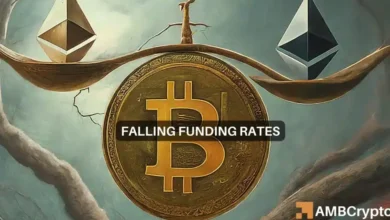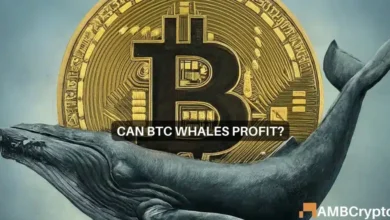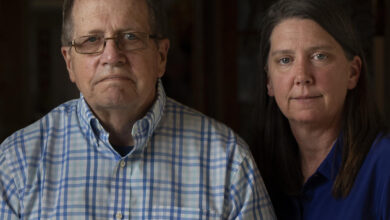Recession indicator is close to sounding the alarm as unemployment rises

[ad_1]
While unemployment is still historically low, its rate of increase could be a sign of deteriorating economic conditions. That’s where the so-called Sahm Rule comes in.
It says that when the three-month moving average of the jobless rate rises by at least a half-percentage point from its low during the previous 12 months, then a recession has started. This rule would have signaled every recession since 1970.
Based on the latest unemployment figures from the Labor Department’s monthly report on Friday, the gap between the two has expanded to 0.43 in June from 0.37 in May.
It’s now at the highest level since March 2021, when the economy was still recovering from the pandemic-induced crash.
The creator of the rule, Claudia Sahm, was an economist at the Federal Reserve and is now chief economist at New Century Advisors. She has previously explained that even from low levels a rising unemployment rate can set off a negative feedback loop that leads to a recession.
“When workers lose paychecks, they cut back on spending, and as businesses lose customers, they need fewer workers, and so on,” she wrote in a Bloomberg opinion column in November, adding that once this feedback loop starts, it is usually self-reinforcing and accelerates.
But she also said the pandemic may have caused so many disruptions in the economy and the labor market that indicators like the Sahm Rule that are based on unemployment may not be as accurate right now.
A few weeks ago, however, Sahm told CNBC that the Federal Reserve risks sending the economy into a recession by continuing to hold off on rate cuts.
“My baseline is not recession,” she said on June 18. “But it’s a real risk, and I do not understand why the Fed is pushing that risk. I’m not sure what they’re waiting for.”
That came days after the Fed’s June policy meeting when central bankers kept rates steady after holding them at 5.25%-5.5%—the highest since 2001—since July 2023.
The Fed meets again at the end of this month and is expected to remain on hold, but odds are rising that a cut could happen in September.
Sahm also said last month that the Fed Chair Jerome Powell’s stated preference to wait for a deterioration in job gains is a mistake and that policymakers should instead focus on the rate of change in the labor market.
“We’ve gone into recession with all different levels of unemployment,” she explained. “These dynamics feed on themselves. If people lose their jobs, they stop spending, [and] more people lose jobs.”
Meanwhile, Wall Street has had a more sanguine view of the economy, citing last year’s widespread recession predictions that proved wrong as well as the AI boom that’s helping to fuel a wave of investment and earnings growth.
Last month, Neuberger Berman senior portfolio manager Steve Eisman also pointed to the boost in infrastructure spending.
“We’re just powering through, and I think the only conclusion you can reach is that the U.S. economy is more dynamic than it’s ever been in its history,” he told CNBC.
[ad_2]
Source link




